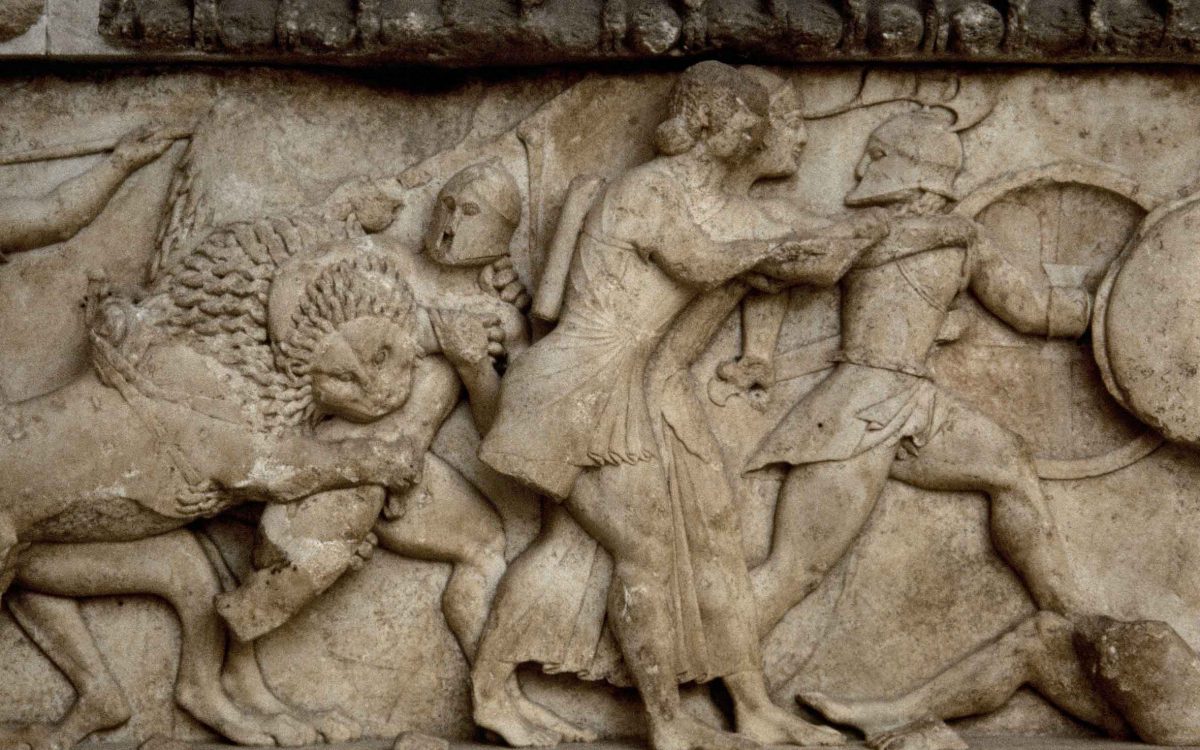Dedicated by the islanders of Siphnos, the richly decorated Treasury building was erected at the Panhellenic religious center of Delphi sometime around 525 BC. The building was located along the Sacred Way – a processional, ceremonial road – that defined the backbone of the sanctuary.
The Treasury was used to house votive offerings to the god Apollo, and was described by Herodotus as among the richest in the sanctuary. Striking for its ornate carvings and built entirely out of marble, the Treasury was famed for the early use of two caryatids or korai (maidens) as columns on the west porch. Of the two pediments, only one survives, decorated with sculptures depicting Apollo and Herakles competing for the Delphic tripod.
The relief decoration that encircled the building above the epistyle (chief beam) is the earliest known example of a continuous narrative frieze. Depicting scenes from Greek mythology including the Assembly of the Gods at Troy (east) and the Battle of the Giants (Gigantomacy) (north), differences in style indicate the work of at least two sculptors and their respective workshops.
City-states in ancient Greece erected Treasuries at religious centers to express reverence, piety and gratitude to the gods for prosperity or divine support. At the same time, they were conspicuous displays of wealth and self-glorification. In the case of the Siphnians, Herodotus relates how the island grew wealthy thanks to the gold, silver and lead mines, using the profits to build the elaborate Treasury.












